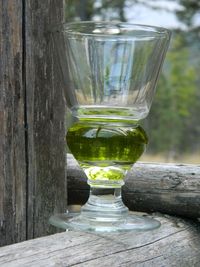
By Dana Allen
Fifteen
miles down the road from Montana’s in , Joe and Jules
Legate, owners of , are crafting American absinthe.
Once thought
to be hallucinogenic, absinthe was banned. That absinthe is a hallucinogen is,
in fact, an early 20th-century urban myth. , the supposedly
psychoactive ingredient, chemically resembles THC, which causes the “high” in
marijuana. But Thujone doesn’t have the same effect on humans.
Absinthe originated
in the Jura mountains of Switzerland, but gained popularity and infamy with
bohemian artists living in Paris at the turn of the 20th century. Wine
was too expensive— had decimated two-thirds of Europe’s
vines—and absinthe became the working class drink of choice. Not only was it a
stronger spirit, but its unique herbal mix reputedly heighten some senses while
dulling others. Legendary drunken debauchery ensued, with tales of
impressionist painters being led to artistic revelation by “the green fairy,” a
euphemism for the spirit's effect. Soon the liquor was reviled, blamed for
insanity, and outlawed.
Production
went underground until 2007, when the American Alcohol and Tobacco Tax and
Trade Bureau lifted the ban by clarifying rules governing thujone content in
foods and beverages. American distillers, including the Legates, brought the
green fairy to life.
The Legates discovered
that Artermisia absintheium, grand
wormwood, the flavor in distilled absinthe, grew wild on their property.
Curious, they sent samples to a Seattle distillery, which reported
enthusiastically on the quality of their plants. Soon the Legates were growing
and supplying herbs to distillers around the country.
Then, they began
to dabble with their own distilling, using traditional 1870-1890 French and
Swiss methods. The Legates created two varieties using Kentucky spirits infused
with the Holy Trinity of absinthe herbs—grand wormwood, green anise, and
fennel—topped off with runoff water from nearby .
The result:
two varieties, a white and a green, that are both smooth-sipping spirits with
notes of licorice. Louche, the French word for disreputable or shady, refers
to the milky coloration good absinthe takes on when cold water is added. Some
say that the proper way to drink absinthe is with a dribble of water from a sugar
cube placed on a slotted spoon with water slowly poured over it and into your
glass. According to the Legates, this is “totally optional.”
Next time you find yourself skiing Whitefish, sample Ridge
Distillery’s absinthe at , where it's featured on the cocktail
menu. Go to the source at the annual in Switzerland. Or get the green
fairy at home, $42-$62/750ml; .